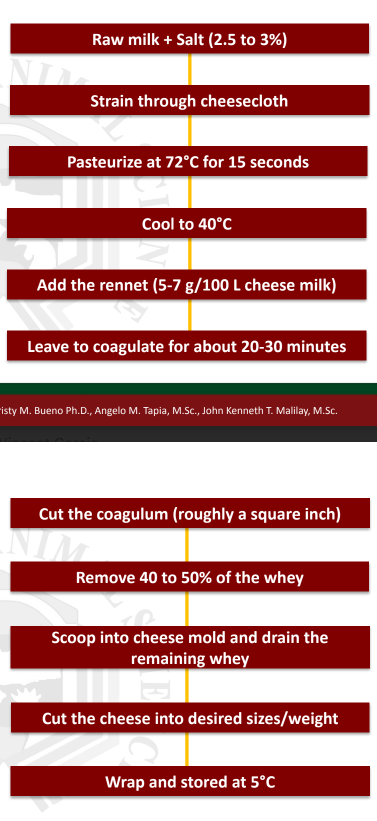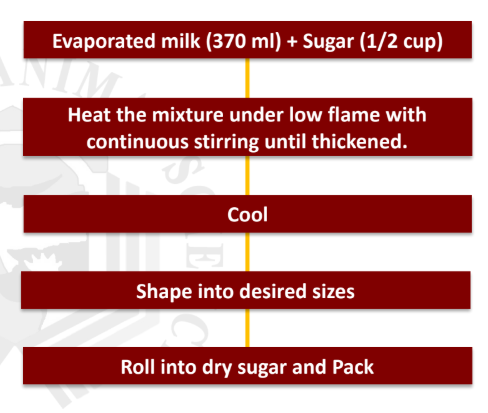Agri 21 Theoretical lab last exam Jesus Christ part 3
1/24
There's no tags or description
Looks like no tags are added yet.
Name | Mastery | Learn | Test | Matching | Spaced |
|---|
No study sessions yet.
25 Terms
Milk
Normal mammary secretion of
milking animals intended for
consumption as liquid milk,
or for further processing.
Milk composition
• Fat is the most variable and easily
influenced by:
- Feeding system
- Milking techniques
Bacterial count of milk
• Presence of microorganisms
causes the premature spoilage of
milk. Pathogenic organisms
contaminate milk due to careless milk
handling.
Chemicals
• Milk should be free from antibiotics,
pesticides, detergents, and
sanitizers.
Inspect the appearance and color of milk
• Color
-Cotton white: Carabao or goat
-Slightly yellowish: Cow
• Free from precipitates or floating fats
Taste (but do not swallow) a sample of milk
• High quality fresh milk should taste
slightly sweet and pleasant without
intense flavor.
Filter the milk through a clean white cloth into another clean container to check on impurities
• Good milk should be free from
impurities.
Clarification and filtration
• Done to remove extraneous materials and
body cells.
Mechanical centrifuge
CLARIFICATION AND FILTRATION
clarifies the milk
by removing dirt and somatic cells;
separates the fat
Passing milk through a cheesecloth
CLARIFICATION AND FILTRATION
serves as a filter
Cooling
• Storing of milk at 2 to 4°C
- to delay enzymatic and microbiological
changes in milk
Note: Milk freshly drawn from the cow’s udder is
warm, about 37°C
Separation
• Separation of cream from skim milk.
Gravity and Mechanical (centrifugation)
SEPARATION
based on the difference in
density between the cream and skim milk.
Standardization
• Provides products of uniform fat contents.
Pasteurization
• Process of heat treatment that aims to
destroy:
- microorganisms that can cause disease
- microorganisms and enzymes that may
shorten the shelf-life of the product.
• This is followed by rapid cooling to 4°C or
below to prevent surviving microorganisms
from multiplying.
Holding process
• Types of Pasteurization Method:
145°F (62.8°C) for 30 mins
Flash process
• Types of Pasteurization Method:
165 to 180°F (73.9 to 82.2°C)
for 15 seconds
Ultra High Temperature
• Types of Pasteurization Method:
140°C for 1 second
Vacuumization
• Involves the use of equipment that removes
volatile substances such as odors.
Homogenization
• Fat in milk exist in the form globules ranging
from 0.1 to 15 μm in diameter.
• Homogenization will render the globules
uniform in size of about 2 μm.
Cheese making
• Involves coagulating the casein protein in
milk then separating the milk into solid curds
and liquid whey. The liquid whey is drained
away.
microorganisms/starter cultures
Most type of cheeses use ______________cultures to determine the flavor and texture of the final cheese.
Process flow of manufacture of Kesong Puti

Pastillas
• Type of Filipino milk candy traditionally made
with carabao milk and sugar.
• Also known as Pastillas de Leche or
Pastiyema
Process of Manufacturing pastillas
